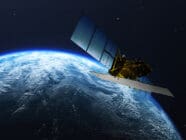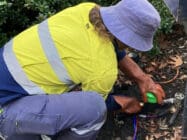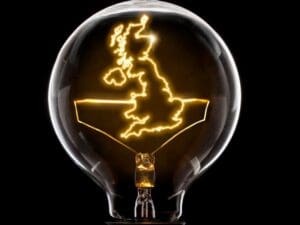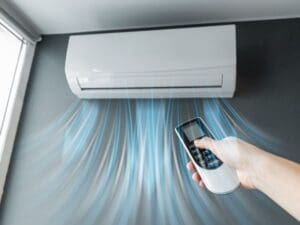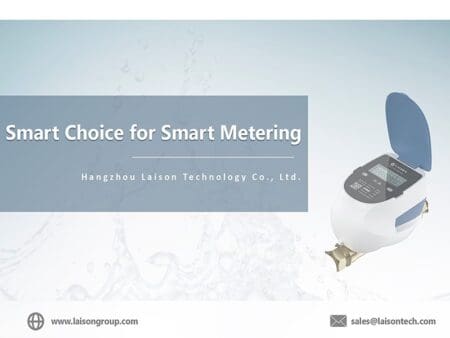
Nowadays, the concept of smart water meters frequently appears in the media and conferences, with most of the topics focusing on how it can help water utilities improve cash flow and reduce non-revenue water (NRW), but very few articles talk about the critical indexes of smart water meters, and how to ensure the success of smart water meter projects.
The conventional standard ISO4064/OIML R49 mainly refers to the metering and mechanical features of the water meter, such as R100 or R160, the length of the meter is 165mm or 190mm. There is currently no unified standard for smart water meters except IEC62055-41,51 which is the standard for STS prepayment functions.
The DLMS in the AMI function is more popular in smart electricity meters, so how to select a smart prepaid water meter has become a challenge for water utilities. This article tries to propose the key aspects of the reliability of smart water meters.
Generally speaking, according to the special working environment of tropical rainforest or dry desert climate in African countries, the requirements for smart water meter will be more strict than in Asia or South America. In summary, the critical aspects of the smart water meters that need to be considered are as follows:
1. Communication Method for Remote Data Reading
In the previous article, “Why Prepaid Water Meters Must Be Smart”, we have explained why prepaid water meters must support remote reading or two-way communication. So how to choose the suitable communication method from GPRS, NBIoT, 3G, 4G, LoRa, LoRaWAN, Sigfox or Bluetooth? First, whether local telecommunication companies provide NBIoT network which specifically designed for smart meters or other IoT devices as a LPWAN network.
Compared to GPRS, NBIoT module has the characteristics of low battery consumption, and the data flow cost of NBIoT is also much lower than GPRS, 3G or 4G network, the common point is that all of these communications require a SIM card, either an e-SIM for PCBA or a physical SIM card, which means the water utility needs to pay for data flow on a monthly basis.

2. Battery Life from 6 Years to 10 Years
Battery lifespan not only depends on the battery capacity indicated by mAh, such as the ER26500 is typically 8500mAh, but also closely related to the power consumption of smart water meters in different situations, such as communication technology. And how firmware is designed to manage power consumption, like sleeping mode. And 3rd, the power consumption is also related to the working environment, IP level of the meters and the components. Sometimes manufacturers declare battery life of more than 8 years or even higher, but without any documentation from the battery provider, theoretical calculations such as Saft or Tadiran may require further evaluation.

3. IP Level for Smart Meters and Independent Components Such as PCB or Battery
The IP level of the smart water meter is preferable IP68, since the smart meter can sometimes be immersed in water. But when the service life of the meter increases to above 3 years or more, only the meter body is IP68 may still be a challenge, because the material of the meter may start to deform due to sunlight and rain, so it is better to require that the battery cabinet, valve, and PCB must IP68, and have a 3rd party certificate.
4. The material of the meter body, such as brass, or different types of plastic.
In Africa, the theft of brass material is inevitable, so a plastic body may be more suitable for water companies. Additionally, the Meter Casing material must be UV-resistant, resistant to high temperature up to 65°C and fire-resistant. Water permeability characteristics are also an optional indicator for choosing materials because of the high humidity in some areas.
5. Leakage Detection Inside or Outside the Door
The leakage detection function of the smart water meter can be realized through night flow monitoring. As the main IoT device in the water pipe network, the smart water meter is also an important part of the DMA, District Management Area, which is another major topic of water leakage management.
6. Bypass Detection and Anti-tamper Functions
Cases of bypassing smart meters usually occur because of the purpose of evading payment. Smart water meters must have the ability to close valves automatically or record events when they occur, and technical solutions may vary from manufacturer to manufacturer, and water companies can compare and choose an effective way. Other anti-tamper functions such as anti-magnetic and meter cover opening events etc. can be considered as optional functions.
7. Prepaid or Postpaid Working Mode
Prepaid water meters are only one working mode of smart water meters, and there is one paradox that in most cases, water utilities cannot cut off the water supply to industry users who do not pay for their bills, such as government institutes, hospitals etc.. Therefore, it is necessary to design prepaid functions in the platform, and smart meters support remote valve control.
8. Flexible Water Purchase and Payment Solutions
The concept of digitization is well known today, and it can help water companies adjust their operations processes. With the integration of smart water meters and Mobile payments, organizations no longer need meter reading workers, who can join smart water meter maintenance teams, or build telecommunications networks. Mobile payment platforms now are also popularly used in mechanical water meter billing. And for STS prepaid water meters, they have inherent advantage since they adopt digital encryption technology for 20-bit token transmission.

9. SaaS Software Based on Cloud or Web System Based on Physical Server
Many software companies now recommend cloud-based software solutions, since it is more flexible and expandable when the number of system users continues to increase. But some countries still have limitations on data security, so if leading cloud service providers such as Amazon and Google have not yet established branches in specific countries, a physical server-based web system is also a good choice for water companies. Both of them are not required to be installed on a PC, only user ID and password authorization to log in to the system, check reports or start daily operations like Registration or Vending.
10. Training and Local Maintenance Support
Training may need to take place in different stages, such as a Concept Presentation during ROI, a Request for Interest from the project team or a pilot project stage, and eventually extend to the whole operations team. Local maintenance is a very important factor in ensuring the success of a project, which relates to technical support, training and supply of CKD or components. Many water companies now prefer local assembly with local maintenance as one of the main modules in the workshop.
Anyhow, there are some other factors that may affect the sustainability of prepaid water meter services, but if water companies can understand the most important of these causes, it will definitely help avoid the failure of smart water meters and digital billing projects, which is a big investment and expect to bring the significant improvements in operations.
If you have any comments, please contact the author: Mr. Raymond Zheng on WhatsApp, +86 131 85002086, laisontech@gmail.com


